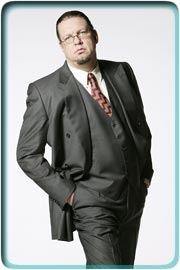February 10-16, 2005
art
Going to Extremes
 Sumi Maeshima, Flied Egg #3 (2004), 13 inches by 10 inches by 10 inches, earthenware and nails. |
Ceramics that are over-the-top, understated and somewhere happily in the middle.
A trio of outstanding exhibitions has brought to light, with surprising thoroughness, the diverse approaches in the field of ceramics today. In two shows at The Clay Studio, curator Jeff Guido has contrasted works with a pared-down aesthetic with those with a more-is-more approach, while Sumi Maeshima’s one-person show at St. Joe’s proposes an interesting mediation of these extremes.
“Excess” highlights work in clay by 12 artists with roots in Europe, Asia and all around the U.S., and deals with overabundance and obsessiveness in terms of construction or surface treatment. In New Hybrids, Susan Beiner has constructed a set of nine flower forms from cast bolts, screws, hooks and petals each a squashy pile of organic and mechanical forms glazed in wet, rich, pastel colors. Globalization #5, by Karen Koblitz, is a three-handled urn glazed with wild and colorful decorative patterns. Looking closer you can see a world of tiny Pokeman characters, such as Pikachu, Magikarp and Voltorb, which my son was delighted to identify during our visit. Annabeth Rosen’s piece, Souvenir (from the ends of the earth), shows an elemental struggle between two prickly stacked and intermingled forms, while Michael Lucero’s sleekly formed Pug is obsessively covered with swirling patterns of multicolored yarn. These boisterous and over-the-top pieces, and other dynamic works by Ralph Bacerra, Edward Eberle, Laszlo Fekete, Keisuke Mizuno, Andy Nasisse, Sergei Isupov, Bill Stewart (a local artist) and Sun Koo Yuh, reach out and grab us.
A second exhibition at The Clay Studio, “Minimal” (which closed Jan. 30), provided a lovely counterpoint to the work in “Excess.” Eight international artists were represented, all of whom work with severely limited colors and forms designed to draw us in slowly. Yih-Wen Kuo’s piece from Serene Series, a short, rectangular, box shape glazed with a liquid monochromatic turquoise-blue, has subtle modifications to the surface, including drips, scars and tiny cutout squares. Bodil Manz constructed a perfect white oval shape, like an open Shaker box, with thick black and dark-blue stripes around the rim. The Color of Butter, made by Susan York, consists of a stack of thin, creamy-yellow trapezoids of clay (reminding me of flat planes of baseball-card chewing gum) stacked in a little wooden holder attached to the wall. Mary Barringer, Maren Kloppman, Jae Won Lee, Jeffrey Mongrain and Tetsuya Yamada each invite reflection from the viewer through different limitations. All of their ceramic pieces appear minimal, but on closer examination reveal themselves as rich and complex. Currently, The Clay Studio has installed an exhibition of bowls by ceramic artists in this space, as well as clay works by Sandi Pierantozzi around the corner in the Niche.
Meanwhile, at St. Joe’s University Gallery, local artist Sumi Maeshima presents nine of her recent ceramic sculptures that somehow synthesize the minimalist and excessive extremes. Her method is to combine restrained forms and colors with exuberant surface decoration. Maeshima’s Flied Egg #3, a witty retake on a Faberge egg, is surfaced with bas-relief flies, hundreds of black nailheads (like caviar) and a luscious, drippy green glaze. It sits on a fancy five-pronged stand like a tragicomical imposter. A pair of pieces, Hooked Eggs/Komainu, is made of bulbous gold and green forms with protruding, hooked appendages suggestive of Dr. Seuss characters or slightly malevolent disease organisms. Other pieces in the show are similarly fetishistic. Some are made of squashed vessel forms softly mashed together and studded with nails; others seem smeared across the surface of the wall in a spiral of white porcelain and black nailheads. Maeshima achieves a balance of opposing forces restriction and excess, containment and expansiveness, compliance and pain in her intriguing new work.
The wide-ranging view of the extremes of contemporary ceramics represented in these exhibitions is well worth seeing and contemplating. It’s a reminder in this pluralistic world about the benefit of appreciating all sides of a good argument.(s_hagen@citypaper.net)
The Clay Studio, 139 N. Second St., 215-925-3453

